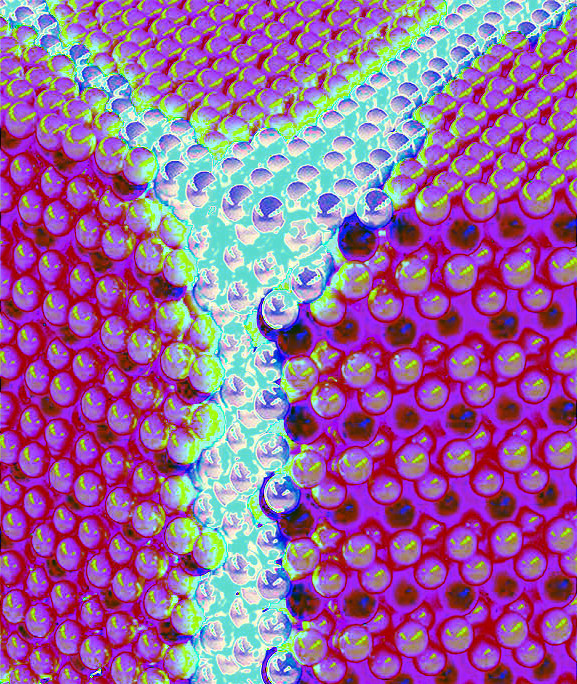Excitonium exists
 Scientists have proven the existence of a form of matter first theorised over 50 years ago.
Scientists have proven the existence of a form of matter first theorised over 50 years ago.
The material is called ‘excitonium’.
Excitonium is a condensate - it exhibits macroscopic quantum phenomena, like a superconductor, or superfluid, or insulating electronic crystal.
It is made up of excitons, particles that are formed in a very strange quantum mechanical pairing, namely that of an escaped electron and the hole it left behind.
It turns out that when an electron, seated at the edge of a crowded-with-electrons valence band in a semiconductor, gets excited and jumps over the energy gap to the otherwise empty conduction band, it leaves behind a ‘hole’ in the valence band.
That hole behaves as though it were a particle with positive charge, and it attracts the escaped electron.
When the escaped electron with its negative charge, pairs up with the hole, the two remarkably form a composite particle - an exciton.
Until now, scientists did not had the experimental tools to positively distinguish whether what looked like excitonium was not in fact a Peierls phase.
While it is completely unrelated to exciton formation, Peierls phases and exciton condensation share the same symmetry and similar observables - a superlattice and the opening of a single-particle energy gap.
An international research team used a novel technique called momentum-resolved electron energy-loss spectroscopy (M-EELS), which was made possible by retrofitting an EEL spectrometer (which measures the trajectory of an electron, and how much energy and momentum it loses), with a goniometer (which can measure very precisely an electron's momentum in real space).
Using this device, the team achieved the first-ever observation of the precursor to exciton condensation - a soft plasmon phase that emerged as the material approached its critical temperature of 190 Kelvin.
This soft plasmon phase is the ‘smoking gun’ proof of exciton condensation in a three-dimensional solid and the first-ever definitive evidence for the existence of excitonium.
“This result is of cosmic significance,” says lead author Peter Abbamonte, a professor of physics at the University of Illinois.
“Ever since the term ‘excitonium’ was coined in the 1960s by Harvard theoretical physicist Bert Halperin, physicists have sought to demonstrate its existence.
“Theorists have debated whether it would be an insulator, a perfect conductor, or a superfluid--with some convincing arguments on all sides.
“Since the 1970s, many experimentalists have published evidence of the existence of excitonium, but their findings weren't definitive proof and could equally have been explained by a conventional structural phase transition.”
Graduate student Mindy Rak recalls the moment in the lab when she first understood the magnitude of these findings.
“I remember [fellow student Anshul Kogar] being very excited about the results of our first measurements on TiSe2 [dichalcogenide titanium diselenide].
“We were standing at a whiteboard in the lab as he explained to me that we had just measured something that no one had seen before: a soft plasmon,” she said.








 Print
Print